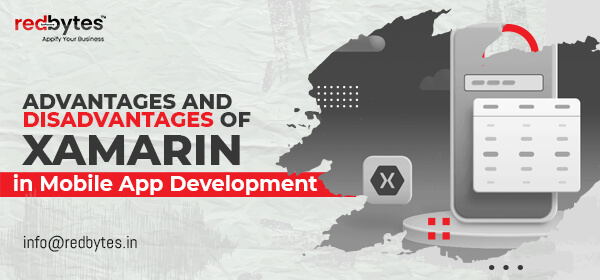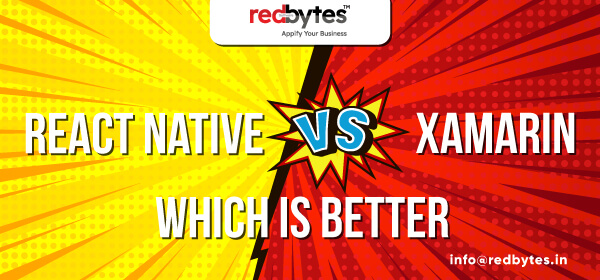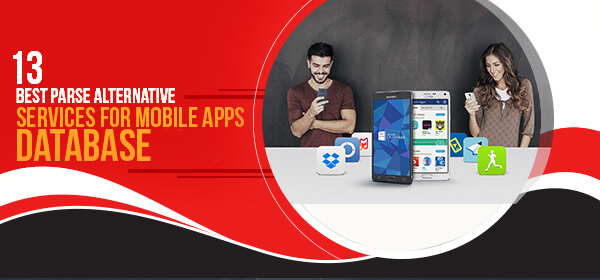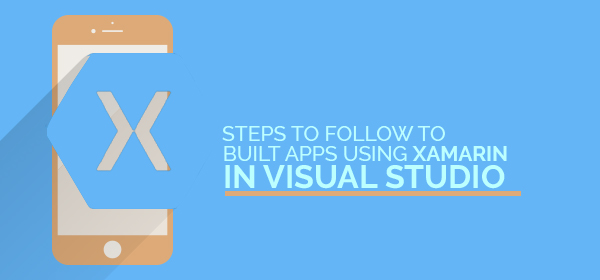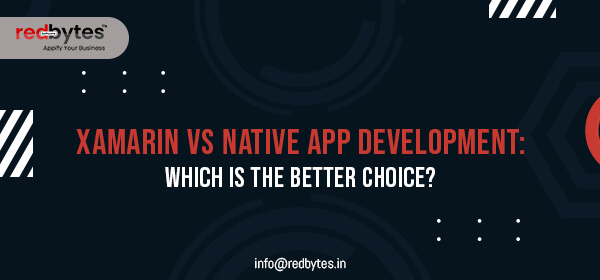Xamarin development is creating a storm in the industry ever since it was introduced with its unique features. The beginners in the platform may be wondering about why Xamarin has won hearts of many in this short time frame.
Yes, the technology can boast of creating amazing cross platform mobile apps for your venture in quick time. It would be a cost effective decision to have Xamarin mobile app for your business as it is optimized for Android & iOS platforms.

With easy collaboration & sharing features, minimal expense and time etc. Xamarin targets larger user base.
From using the same code for different platforms to reduced development cost, the advantages of using Xamarin for development are many. Here are a few among the top benefits of Xamarin development which has made it a unique choice:
1. Native user-interface
With UI elements that are platform specific, Xamarin assures a flawless user experience. The business oriented projects can find it really helpful as the pace of app development is a lot higher than you can expect.
The custom app UI can also be created with no risks for advanced performance as Xamarin.Android and Xamarin.iOS can be used to assure remarkable outcome.
2. Reduced development time
Unlike the platform dependent native apps, the same code can be shared for apps for different platforms when using Xamarin.
This in turn reduces the overall development time. Also switching between the development settings is not needed during the code building phase as it easily works with Visual studio (Windows) and Xamarin (Mac).
Also the automatic debugging facility adds to the reduced development time.
3. Flexibility with C#
Another advantage of Xamarin development is the use of C# as the programming language. With its unique benefits, it is an ideal choice for cross-platform development.
The developer needs are well met with good assistance from Microsoft’s.NET framework. Its simplified syntax makes the developing phase easy for even beginners.
Moreover, the type-safety feature of the language eliminates the possibilities of type errors which improve the success rate of the program.
4. Fewer bugs
For Xamarin development, only a fewer lines of code are used and this also means that you will come across only a fewer bugs.
The minimal bugs also open an opportunity for ample testing time which eliminates the possible errors in the running period.
5. Learner Friendly
Unlike many other platforms for app development, the learning curve for Xamarin is beginner friendly.
When developing apps for iOS and Android, programmers will have to be thorough with both Java and Objective-C languages.

This is not the case when using Xamarin as they just need to be clear with the basics of C# to successfully develop apps for both these platforms.
The time you ultimately need to spend for getting familiarized with the overall process is comparatively very less.
6. Native performance
This unique package avoids the necessity of managing separate teams for different platforms. The Visual Studio lets to experience the benefits of Xamarin libraries and Xamarin Studio.
Influencing the already existing app code base is now common with Xamarin and transitioning to C# are offering them market traction.
The Xamarin apps even have easy access to platform-centric facilities such as Android Fragments and iBeacons that adds to the performance. Delivering device specific app experiences is the speciality of Xamarin app development.
7. API integration
Xamarin has the capability to bind same UI controls and APIs that build Android, iOS and Mac apps. The Portable Class Libraries (PCL) allows sharing codes between platforms.
Whenever novel features are launched in the gadget’s operating system, the Xamarin’s binding technology offers enough assistance to get along.
8. Code reusability
The most unique feature of Xamarin package is its flexibility for code reusability. This feature comes with a lot of benefits such as reduced development time and of course minimized development cost.
There is no need for expense to be spent on different OS developers as the whole development process for all platforms can be handled by a single team.
9. Comprehensive Hardware Support
With Xamarin package, users can expect a complete hardware support with no compatibility issues. This is aided well with particular APIs and plugins, to occupy with common gadgets functionality in multiple platforms.
The process is even smoother with links to native libraries. Thus the native-level functionality and better customization is a reality with minimal overhead.
10. Open Source Technology
After getting acquired by Microsoft, the licensing policies of Xamarin was altered a lot following which many of the significant areas became open source.
The MIT license of Visual Studio has made libraries, runtime, and command line tools freely available for the users. By erasing the head ache of the cost of license, Microsoft has contributed the best part to the platform’s growth. And Xamarin has turned out as a powerful tech stack with strong corporate support.
11. Simplified Maintenance
As the application is designed for cross platform, the updates and maintenance part was a lot easy. The updates or changes were to be done on the source file only and the iOS and Android apps would get updated automatically.
The role of making the application up to date was never challenging and in fact a lot of time and money were saved in this regard.
12. Xamarin Component Store
The concept of collaboration and sharing is executed well with the Xamarin component store. A good collection of free or paid components makes the job easy for the developers as they could add high-quality components.
With minimal lines of code, developers can access cross-platform libraries, UI controls or even third party web services from the store. They can easily add powerful security features and popular back-ends to give a resulting impact.
13. Smooth on-Boarding
For any applications, beginners will have a tough time with the on boarding part but this is not the case with Xamarin. Starters can make use of Xamarin University which is a committed e-learning portal that can handle the job well.

Even those with the least programming experience can get along the package by properly using this facility. This includes start levels to advanced level classes that cover complimentary self-guided learning, office lectures, guest lectures and live online classes.
14. Improved Pace
Working with Xamarin.Forms makes it easy for developers to handle the coding phase at a much faster pace. With this technology, developers just need to design a particular view a single time and then share it across multiple platforms.
The powerful skill set makes the development time much faster than any other package. These forms would give all the flexibility of working with UI toolkit.
15. Smarter Testing
The software quality teams will have an awesome experience when testing Xamarin products. The UI based test scripts let them to do the job with ease and the efficiency of Xamarin Test Cloud adds to it.
The testing covers over 20 iOS and hardware configurations and 24,000 Android gadget types. This gives the benefit of testing comprehensively for almost all scenarios.
These entire features assure more than a return of investment for a venture with Xamarin development. Moreover, an active community that comprises more than 700,000 plus developers are continuously working on improving the success of software.
Future Ready
Last but not the least; the Xamarin development is also unique for its readiness for future. There is no doubt that android, iOS and Windows are ruling the mobile industry.
It is challenging for app developers to make amazing apps that are compatible for all these platforms to increase their user base. And the most important reason why Xamarin is trending now is its flexibility to work with multiple platforms.
This significant feature hints that Xamarin can be adapted to work with any of the mobile platforms as a lot more platforms are expected to hit the industry in the near future.
The listed ones are just a few among the many benefits of Xamarin development. Its wide acceptance over the globe in a short time frame is a sign of the impact it has made in the industry.
Its affluent features and resultant paybacks have made it the most widely used mobile app development software. As per the records, over 1.4 million developers in 120 countries use Xamarin’s products. Considering its unique benefits, Microsoft has acquired it a year ago.

Many businesses are using this cross-platform app to improve their reach and popularity among customers who are using diverse mobile platforms. This innovative technology is opening a new world of hope for businesses to improve its reach and progress without spending much from their pocket.

![9 Reasons To Choose Xamarin For Cross-platform Mobile App Development [Infographic]](https://wp.redbytes.in/wp-content/uploads/2018/04/info-ftr-img.jpg)



